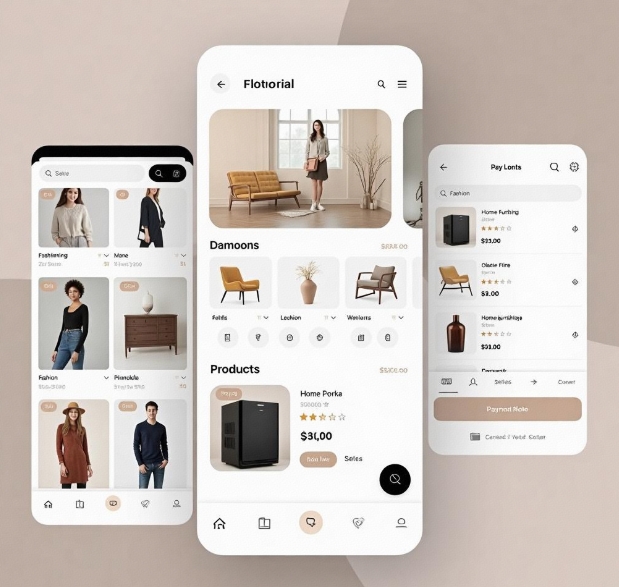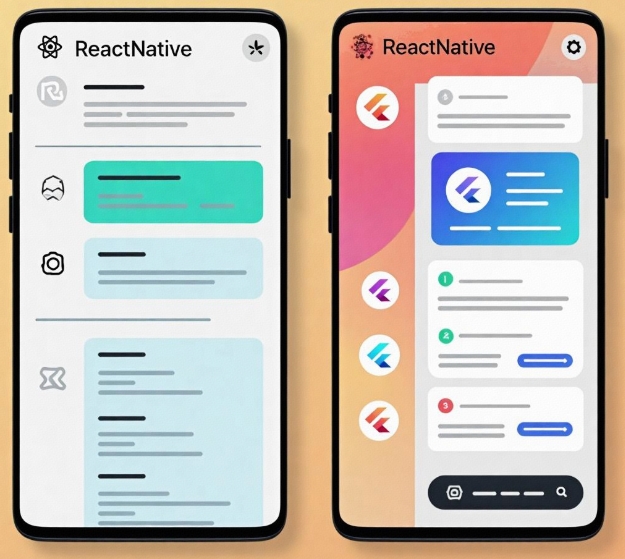Shenzhen Mall App Development Technologies (React Native/Flutter)
- latest articles
- 1.DApp Development & Customization: Merging Diverse Market Needs with User Experience 2.Analysis of the Core Technical System in DApp Project Development 3.How to achieve cross-chain interoperability in Web3 projects? 4.How does the tokenization of points reconstruct the e-commerce ecosystem? 5.How to Set and Track Data Metrics for a Points Mall? 6.What is DApp Development? Core Concepts and Technical Analysis 7.Inventory of commonly used Web3 development tools and usage tips 8.Development of a Distribution System Integrated with Social E-commerce 9.Six Key Steps for Businesses to Build a Points Mall System 10.What is DApp Development? A Comprehensive Guide from Concept to Implementation
- Popular Articles
- 1.Future Trends and Technology Predictions for APP Development in 2025 2.Analysis of the DeFi Ecosystem: How Developers Can Participate in Decentralized Finance Innovation 3.From Zero to One: How PI Mall Revolutionizes the Traditional E-commerce Model 4.DAPP Development | Best Practices for Professional Customization and Rapid Launch 5.Recommended by the Web3 developer community: the most noteworthy forums and resources 6.From Cloud Computing to Computing Power Leasing: Building a Flexible and Scalable Computing Resource Platform 7.How to Develop a Successful Douyin Mini Program: Technical Architecture and Best Practices 8.Shared Bike System APP: The Convenient Choice in the Era of Smart Travel 9.How to Create a Successful Dating App: From Needs Analysis to User Experience Design 10.From Design to Development: The Complete Process of Bringing an APP Idea to Life
With the rapid development of mobile internet, the e-commerce industry has also experienced swift growth. Particularly in Shenzhen, a city at the forefront of technological innovation, the development of shopping mall apps has become a key focus for enterprises competing in the market. In terms of technology selection for shopping mall app development, React Native and Flutter, as two mainstream cross-platform development frameworks, have gradually become developers' preferred choices due to their efficiency and cost-effectiveness.
In this article, we will explore the applications of React Native and Flutter in Shenzhen shopping mall app development, analyze their technical characteristics, advantages, and limitations, and discuss how to select the appropriate technology framework based on actual needs to ultimately achieve an efficient and feature-rich shopping mall app.
I. Background and Requirements of Shopping Mall App Development
With the booming development of Shenzhen's e-commerce industry, many enterprises have developed their own e-commerce platforms, and shopping mall apps have become essential tools for attracting consumers. These apps not only need to fulfill basic functions such as quick product browsing, convenient payment, and order tracking but also provide a good user experience (UX) and rich interactive features to enhance user retention and conversion rates.
As China's hub of technological innovation, Shenzhen is home to numerous tech companies and attracts a large number of developers and technical talents. In such a technology-rich environment, the development of shopping mall apps must consider multiple factors, including market competition, technological innovation, and development efficiency.
II. Introduction to React Native and Flutter
When developing shopping mall apps, developers must choose from various technology stacks. Currently, React Native and Flutter are the most popular cross-platform development frameworks on the market, each offering unique advantages that enable businesses to quickly develop high-quality apps compatible with multiple platforms.
1. React Native
React Native is an open-source cross-platform framework developed by Facebook (now Meta), allowing applications to be developed using JavaScript and achieving efficient interface rendering through the React framework. A key feature of React Native is that it enables developers to run the same code on both iOS and Android platforms.
React Native benefits from extensive developer community support, which allows for the use of rich third-party libraries and plugins during shopping mall app development, significantly improving development efficiency.
2. Flutter
Flutter is an open-source UI framework introduced by Google, developed using the Dart language. Its standout feature is its efficient rendering engine, which provides a consistent UI experience on both iOS and Android platforms. Unlike React Native, Flutter does not rely on native platform UI components but instead uses its own rendering engine to draw the UI, ensuring a highly consistent appearance and performance across different platforms.
Flutter's advantages lie in its rapid development cycle and excellent performance, particularly excelling in interface design and animation effects. Its cross-platform capabilities enable developers to quickly build and deploy cross-platform shopping mall apps.
III. Applications of React Native and Flutter in Shopping Mall App Development
In the development of shopping mall apps, React Native and Flutter each have their strengths. Below are their application scenarios and technical characteristics in practical development:
1. Performance and Smoothness
Performance is a critical factor in shopping mall app development, especially when dealing with complex operations such as extensive product displays, payments, and order management, as app performance directly impacts the user experience.
React Native: React Native connects JavaScript code with native code through a "bridge" mechanism. Although this mechanism makes React Native slightly less performant, it remains sufficiently smooth for most typical shopping mall app scenarios. For applications with higher performance demands, developers can optimize the code or use native modules to enhance performance.
Flutter: Flutter has a clear performance advantage. Since it is entirely developed in Dart and renders the UI through its own rendering engine, Flutter delivers consistent and efficient performance on both Android and iOS platforms. Particularly in shopping mall apps involving high-performance animations and complex UI layouts, Flutter provides a smoother user experience.
2. Development Efficiency and Community Support
Development efficiency is an important consideration in shopping mall app development. Both React Native and Flutter allow code sharing between iOS and Android platforms, reducing development and maintenance costs. However, they differ in terms of development efficiency and community support.
React Native: React Native's greatest advantage lies in its large developer community and abundant open-source resources. Having been around for years, many issues have been resolved by the community, and there are numerous third-party libraries available for developers, significantly improving development efficiency. For common shopping mall features such as payment integration and product recommendations, React Native offers many mature solutions.
Flutter: Although Flutter started later, its active community is rapidly growing, and Google is continuously promoting its ecosystem. Flutter's documentation is very detailed, providing many excellent components and plugins that help developers quickly implement various features for shopping mall apps. Additionally, due to Flutter's highly customizable UI design, developers can more flexibly meet diverse design requirements.
3. User Experience and Interface Design
The user experience (UX) of a shopping mall app directly determines user retention and conversion rates, making interface design and interaction crucial.
React Native: Since React Native relies on native platform UI components, its interface design and interaction experience are closer to native apps. However, React Native's UI elements often require platform-specific code adjustments to ensure cross-platform consistency.
Flutter: Flutter, through its independent rendering engine, achieves highly consistent interface performance across different platforms. This allows developers greater freedom in designing and implementing personalized UIs. Flutter excels particularly in animation effects and highly customizable UIs, providing a more refined and dynamic user experience for shopping mall apps.
4. Cost and Time
Development time and cost are two critical factors in shopping mall app development. Both React Native and Flutter can help shorten the development cycle, but they differ in certain details.
React Native: Since React Native uses JavaScript, it has a lower learning curve for front-end developers, especially those familiar with the React framework. Therefore, React Native can save time and costs in development cycles and team management.
Flutter: Flutter has a steeper learning curve, particularly for developers unfamiliar with the Dart language, who may need time to adapt. However, once mastered, Flutter provides a highly consistent cross-platform experience, reducing long-term maintenance costs.
IV. Technology Selection in Shenzhen Shopping Mall App Development
In Shenzhen, a city driven by high technology, shopping mall app development faces intense market competition and ever-changing user demands. Therefore, enterprises must consider multiple factors when selecting development technologies.
Project Scale and Functional Complexity: If the shopping mall app has relatively simple functions and low performance requirements, React Native may be an ideal choice. It enables rapid development and benefits from extensive community support.
Performance Requirements: If the shopping mall app has high performance demands, especially involving large amounts of product data, payment functions, and complex UI and animation effects, Flutter may be more suitable. Flutter can provide better performance and a smoother user experience, particularly when frequent UI updates and animations are required.
Team Skills: If the development team already has React experience, React Native may be more suitable. Conversely, if the team seeks higher custom UI capabilities in cross-platform app development, Flutter would be a better choice.
V. Conclusion
As the two most mainstream cross-platform development frameworks today, React Native and Flutter each have unique advantages and application scenarios. In Shenzhen's highly competitive e-commerce market, enterprises must select the appropriate development technology based on actual needs. If efficient development and a lower learning curve are priorities, React Native may be the better choice; if interface design, smoothness, and cross-platform consistency are emphasized, Flutter may be more suitable.
Regardless of whether React Native or Flutter is chosen, the success of a shopping mall app depends not only on technology selection but also on product user experience, innovation, and continuous optimization of features. As a global hotspot for technological innovation, Shenzhen attracts a large number of excellent developers and entrepreneurs. Developing an outstanding shopping mall app here is undoubtedly key to entering the market and winning over users.
-

How does the tokenization of points reconstruct the e-commerce ecosystem?
With the continuous advancement of internet technology and the gradual prolifera···
-

How to Set and Track Data Metrics for a Points Mall?
With the rapid development of the e-commerce industry, points malls, as a common···
-

Development of a Distribution System Integrated with Social E-commerce
With the rapid development of internet technology, the e-commerce industry has e···

 Blockchain
Blockchain












